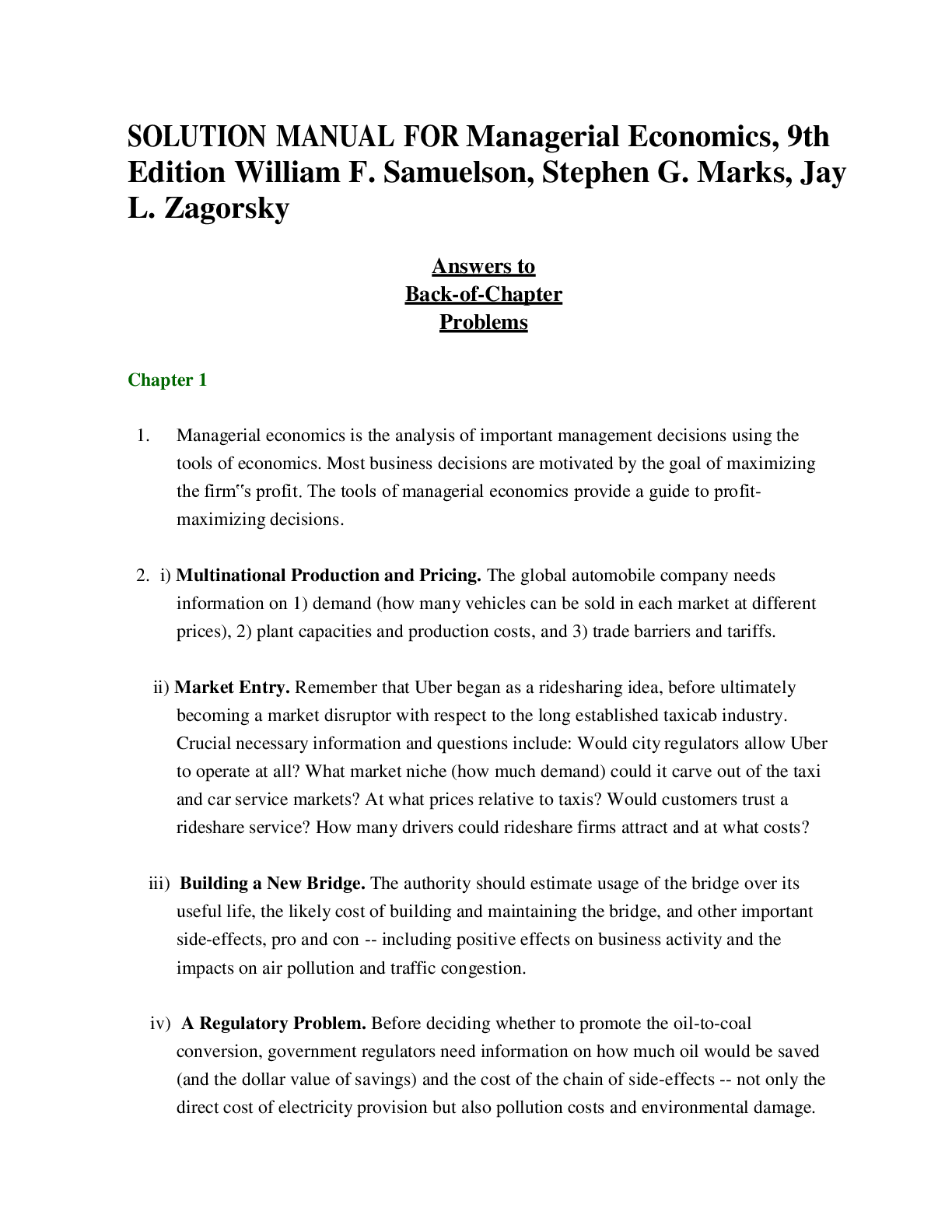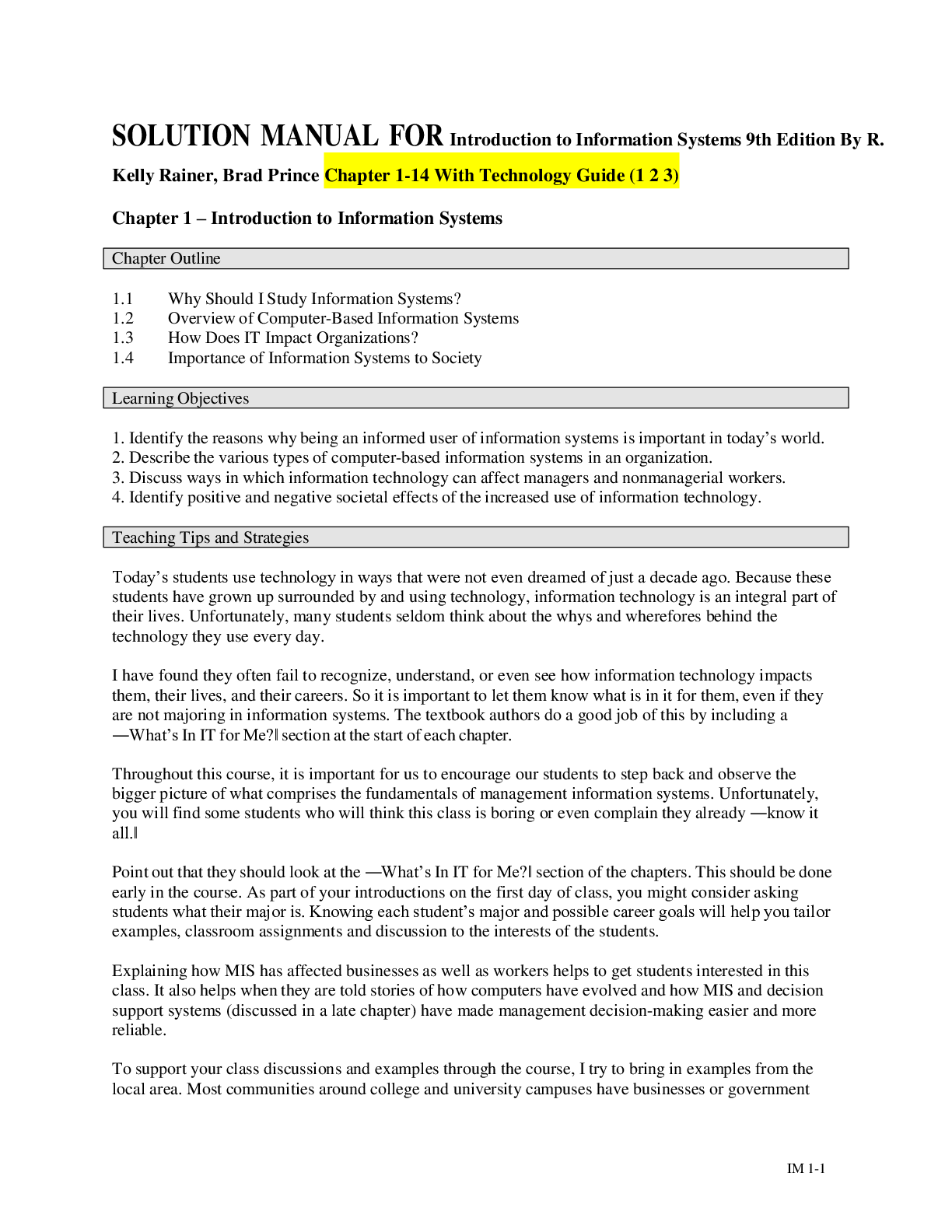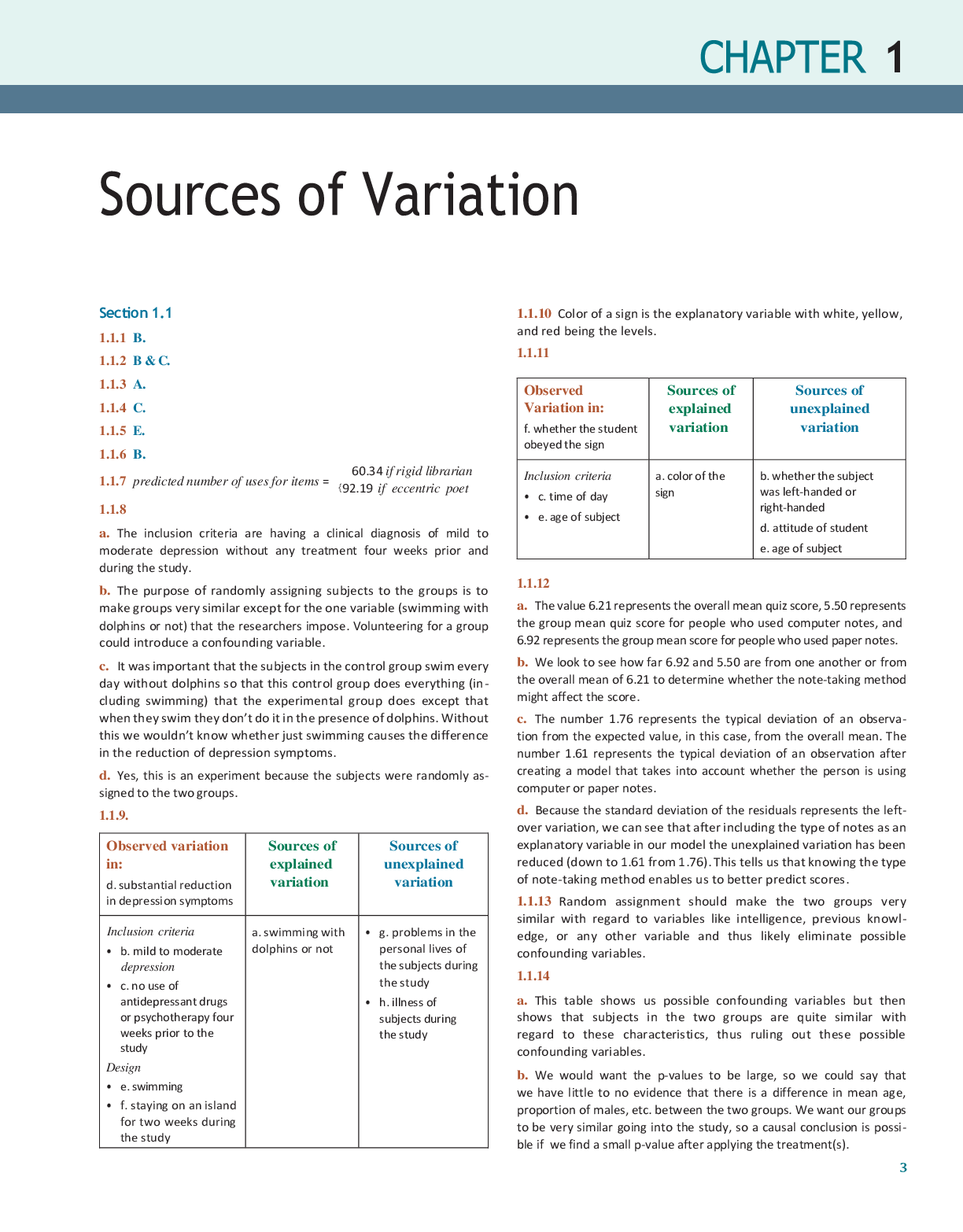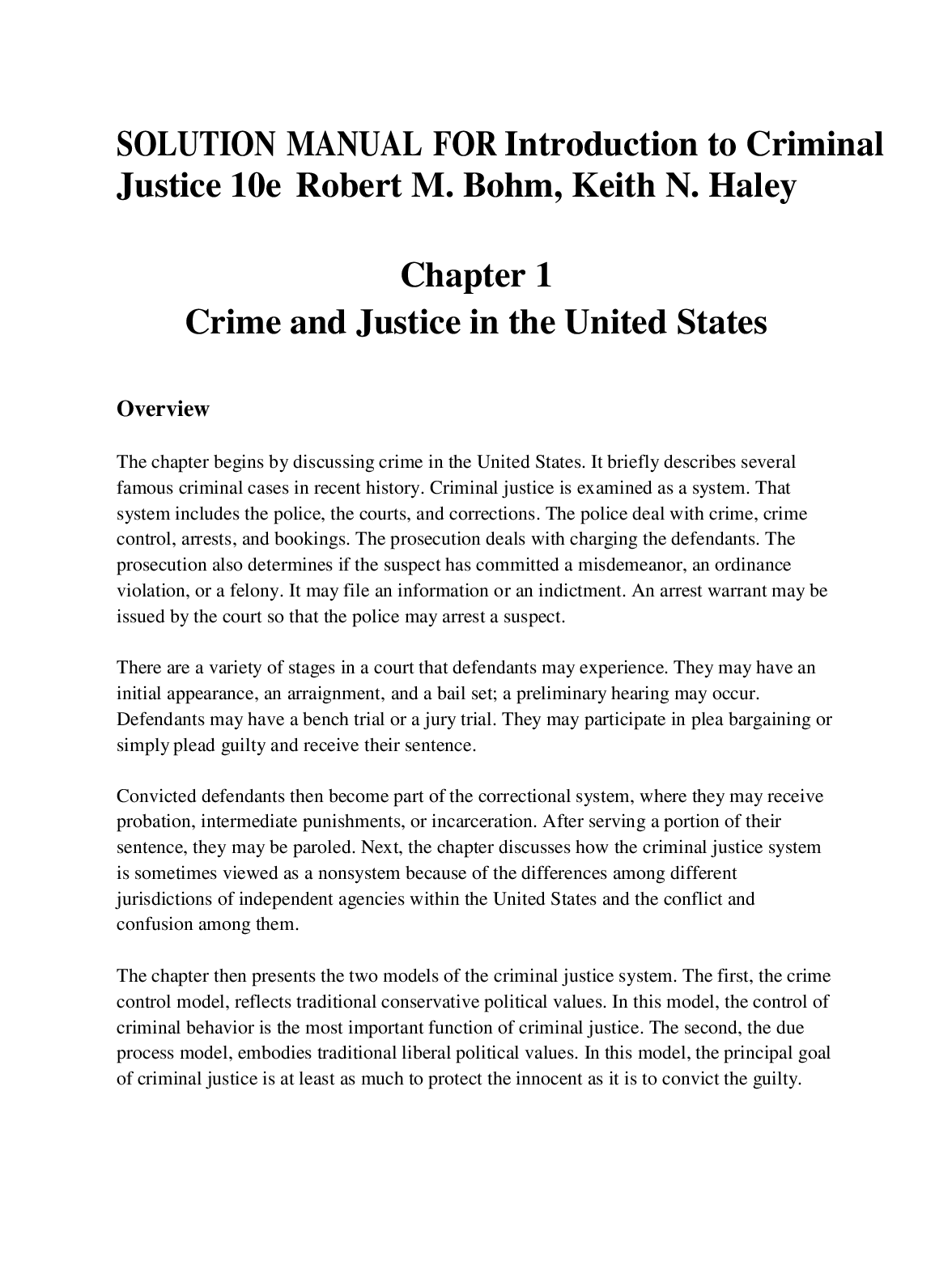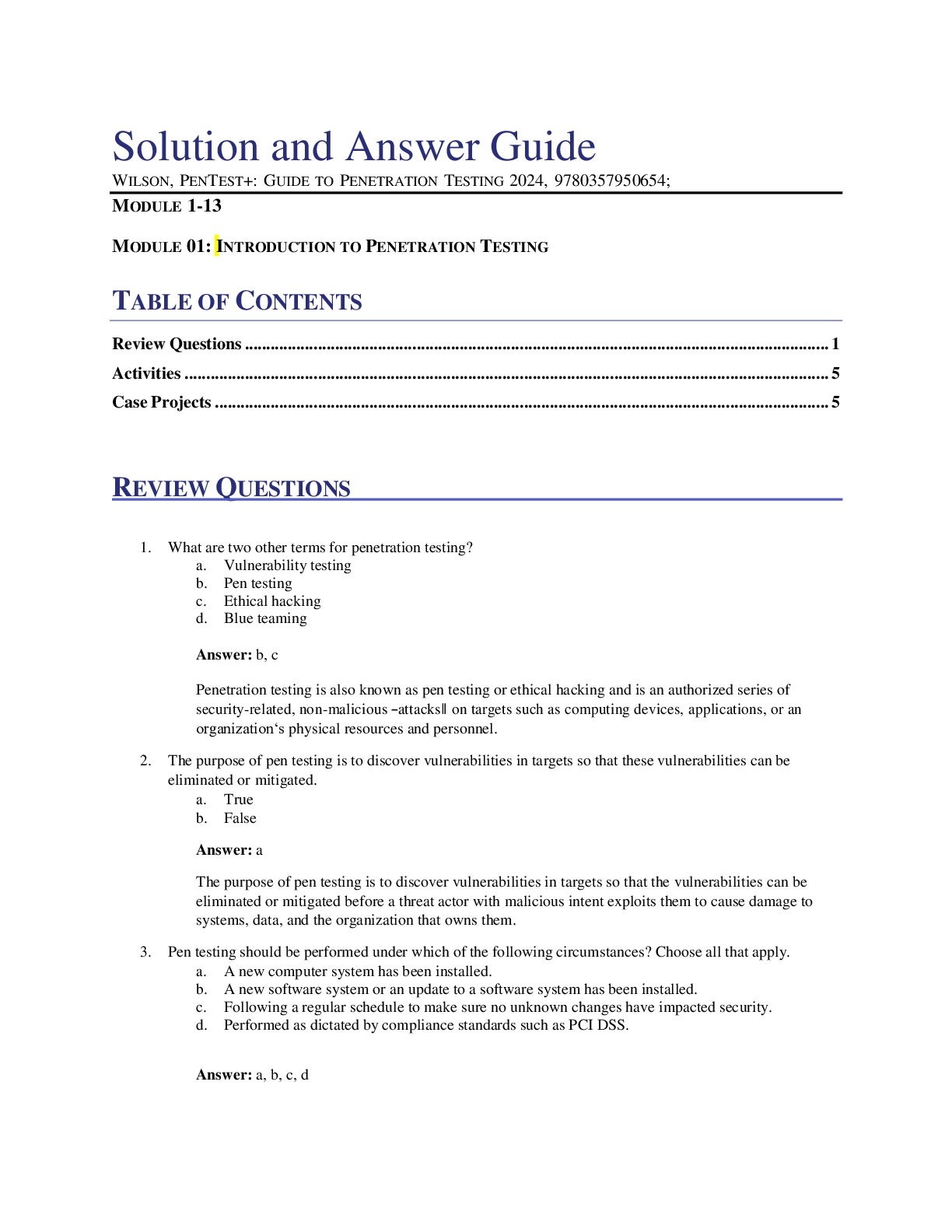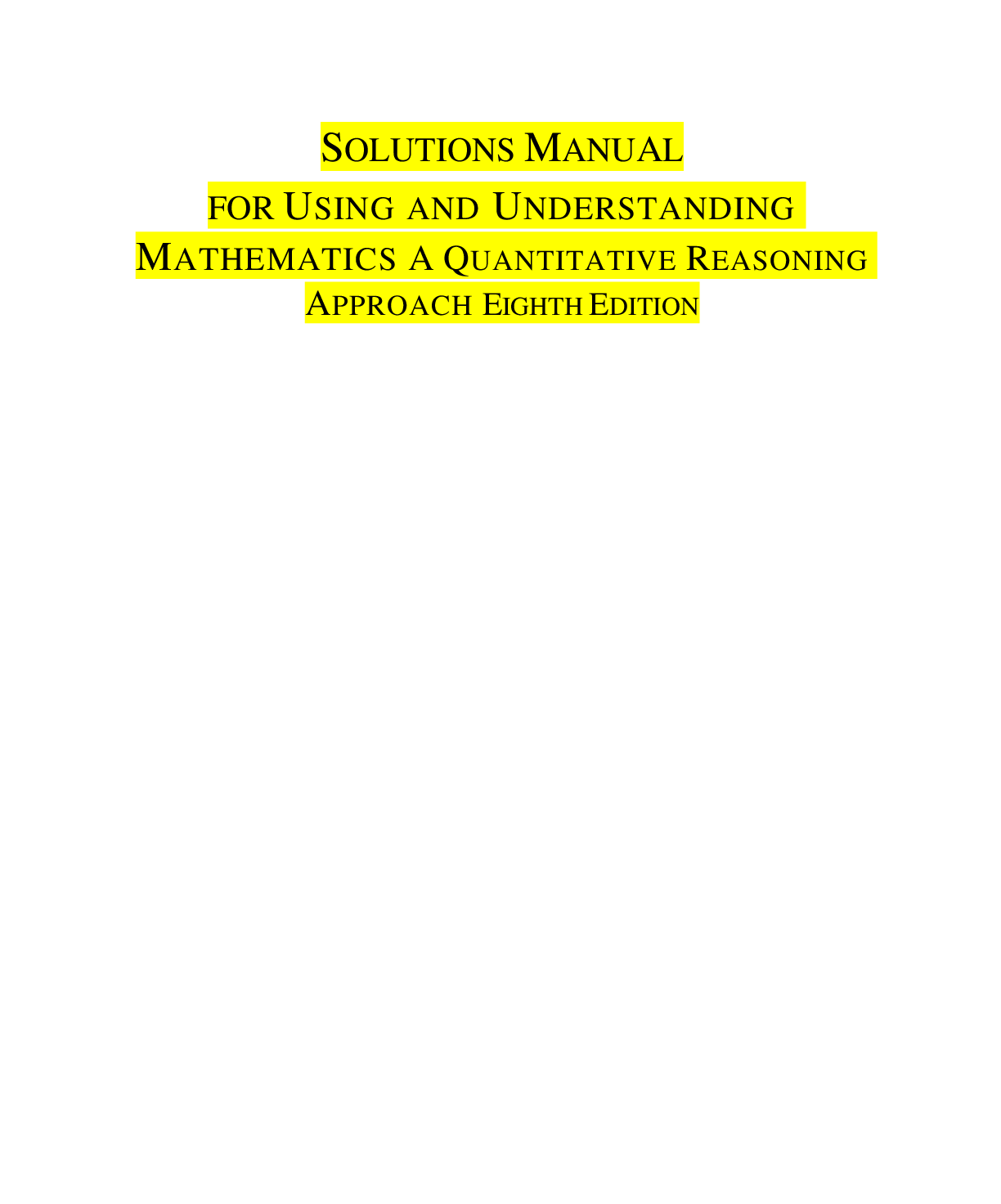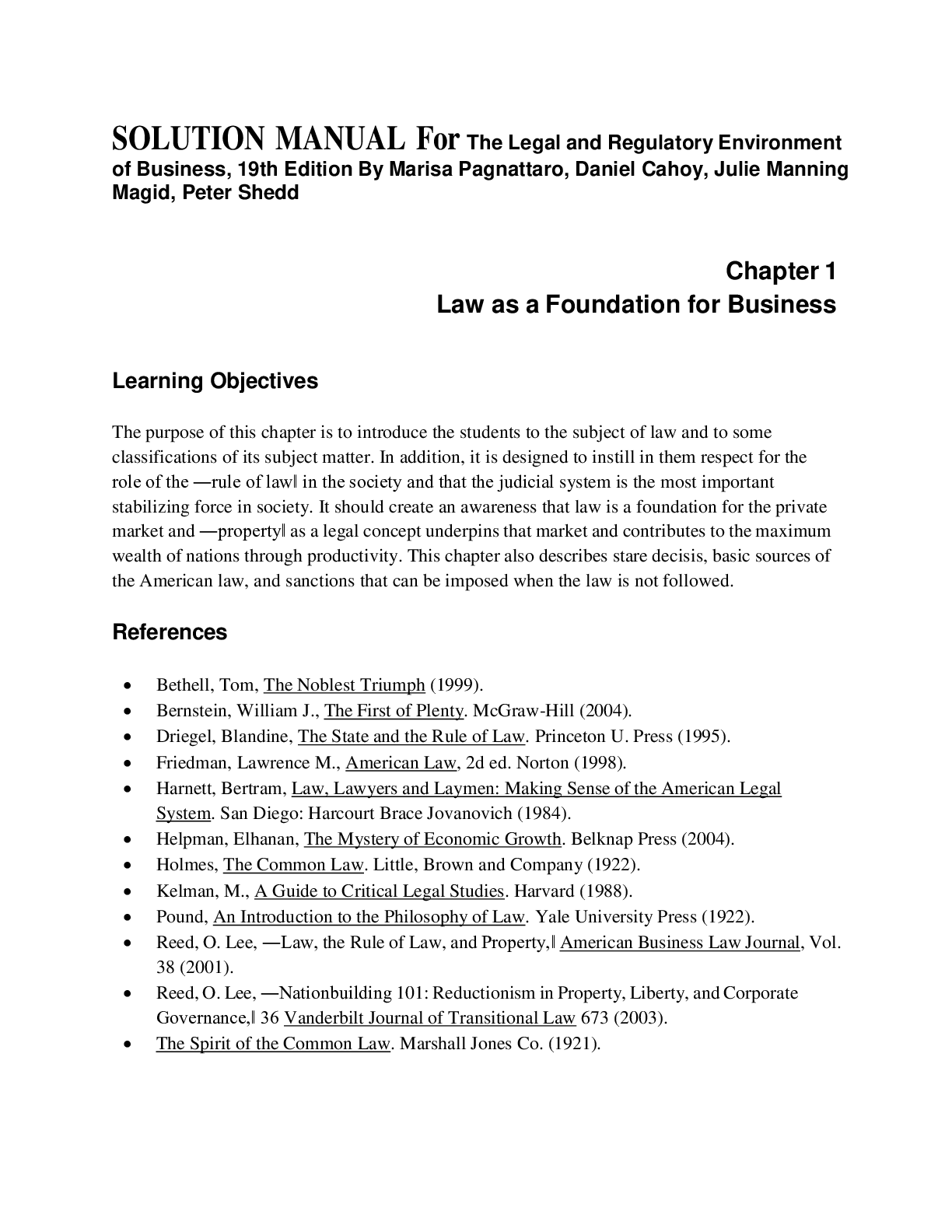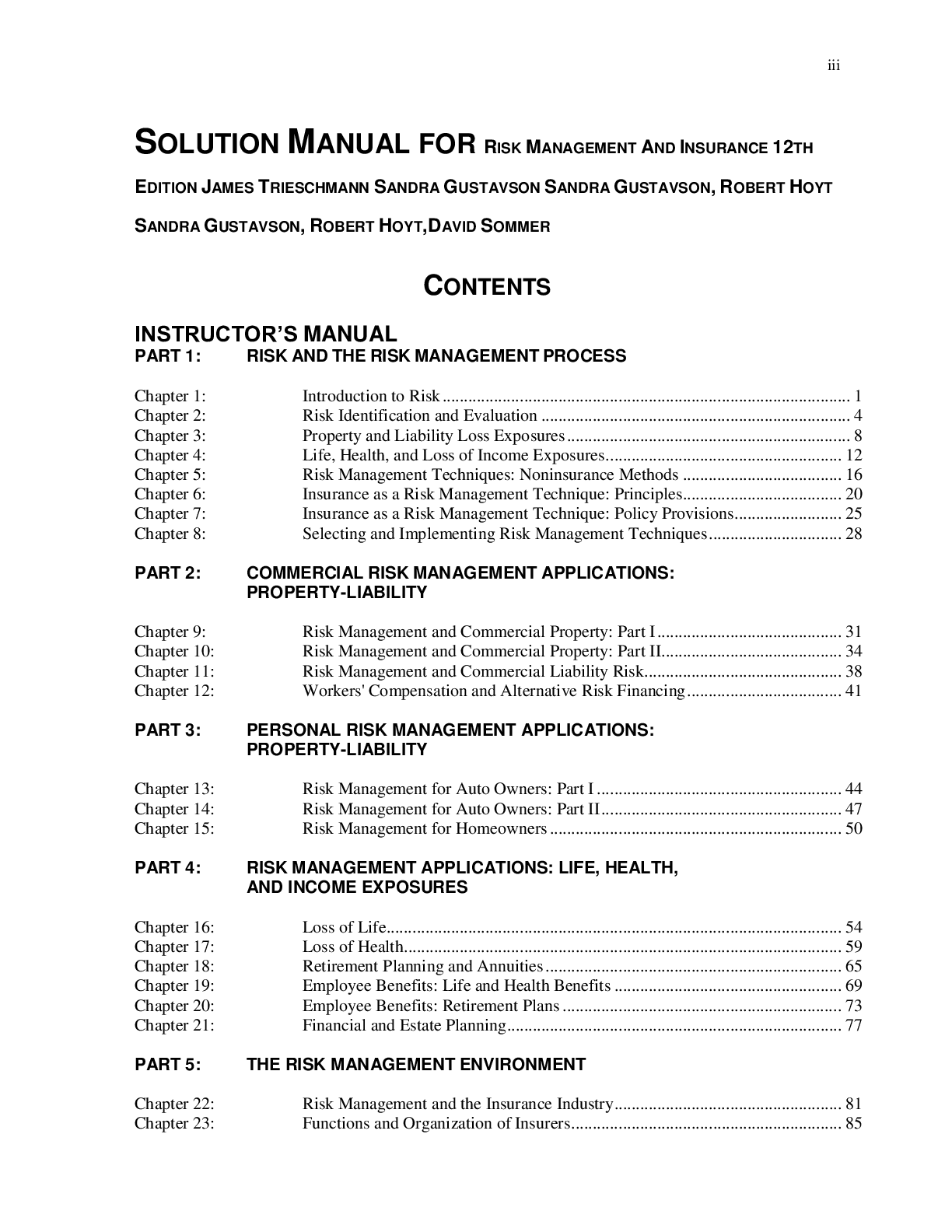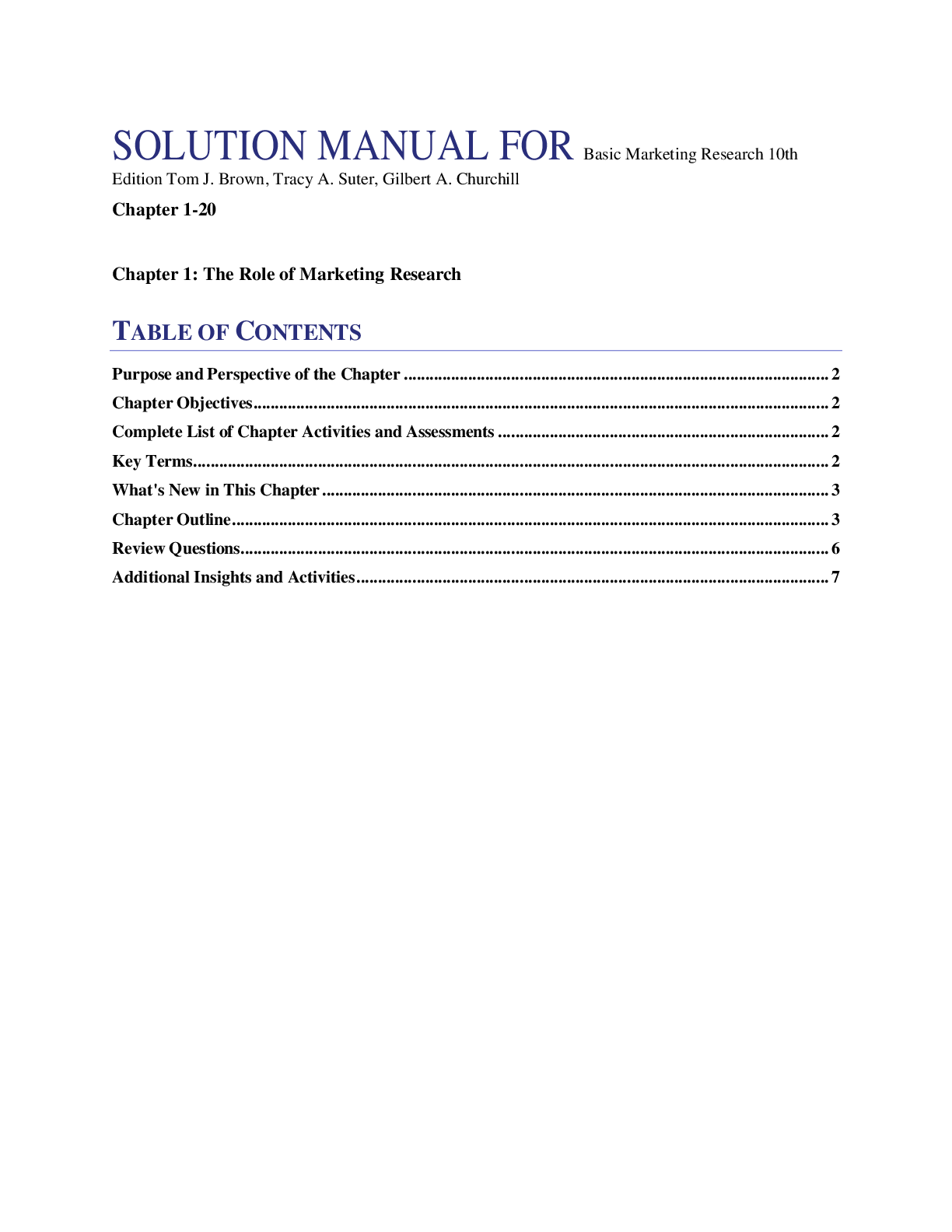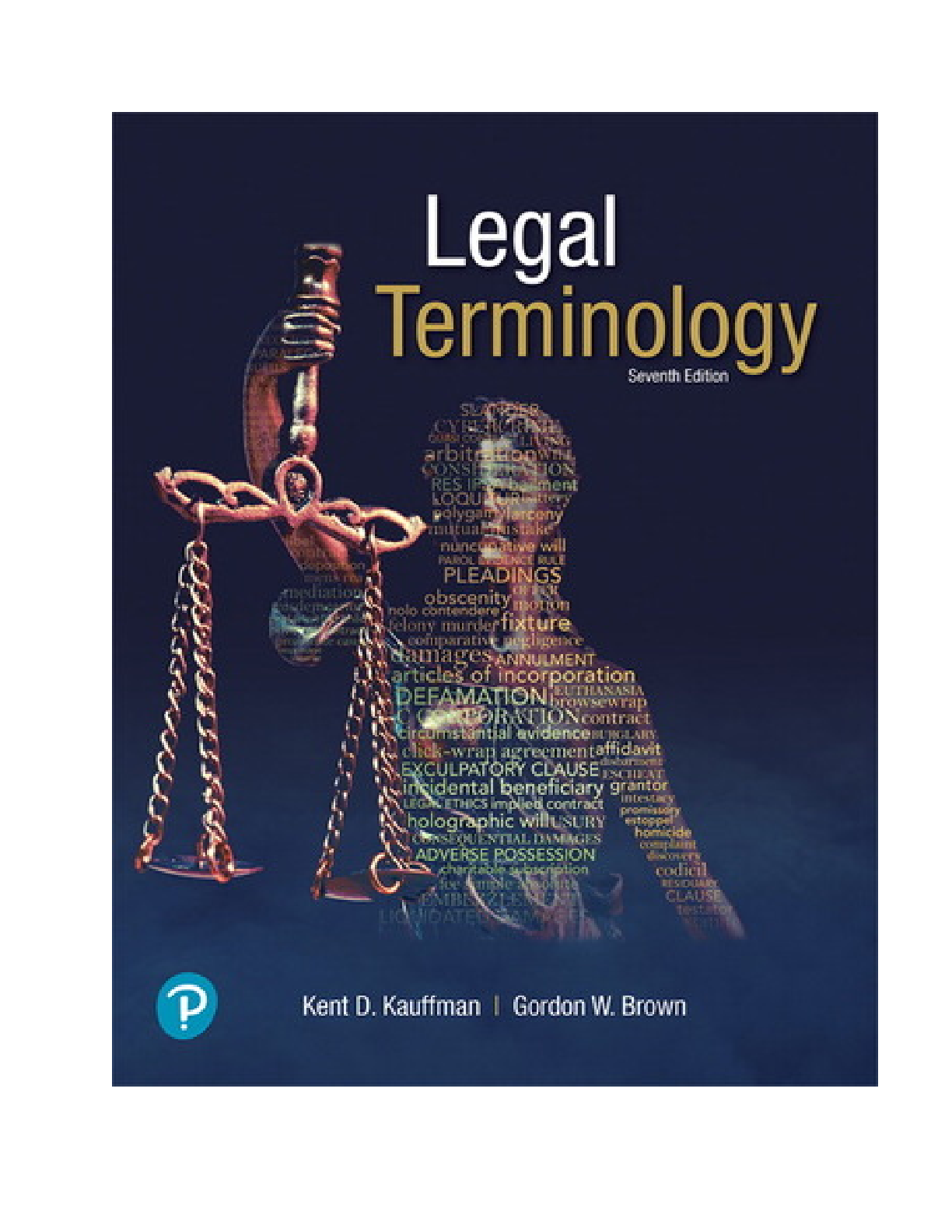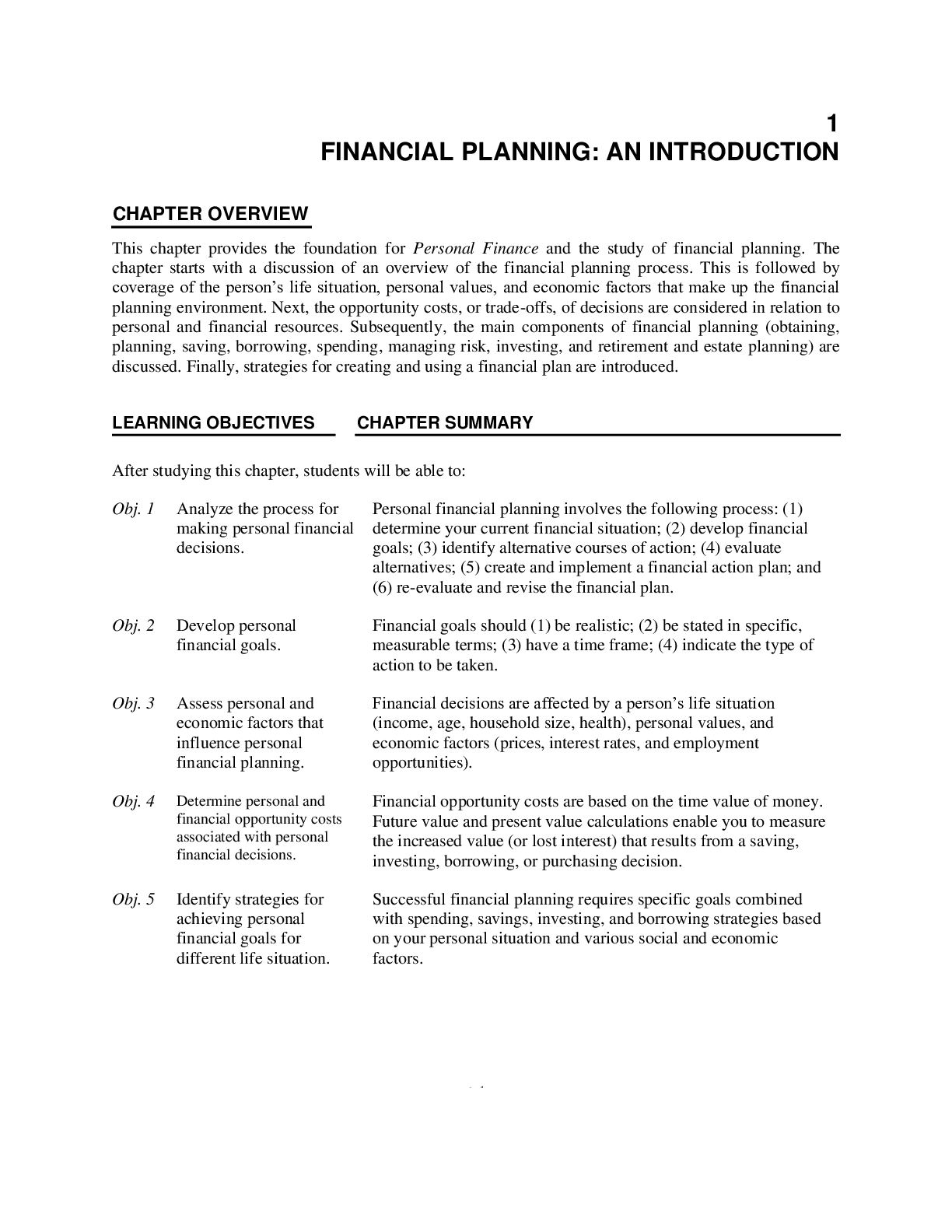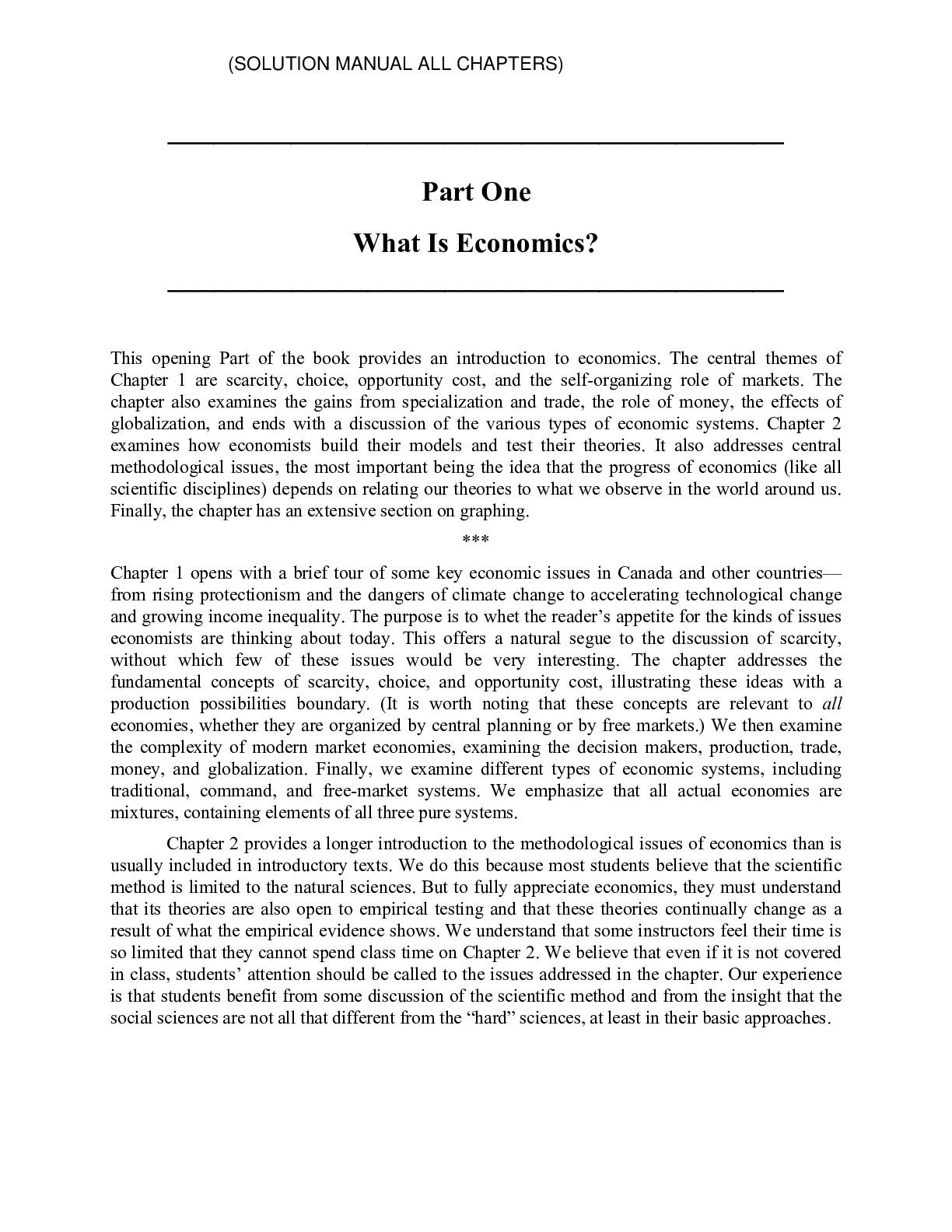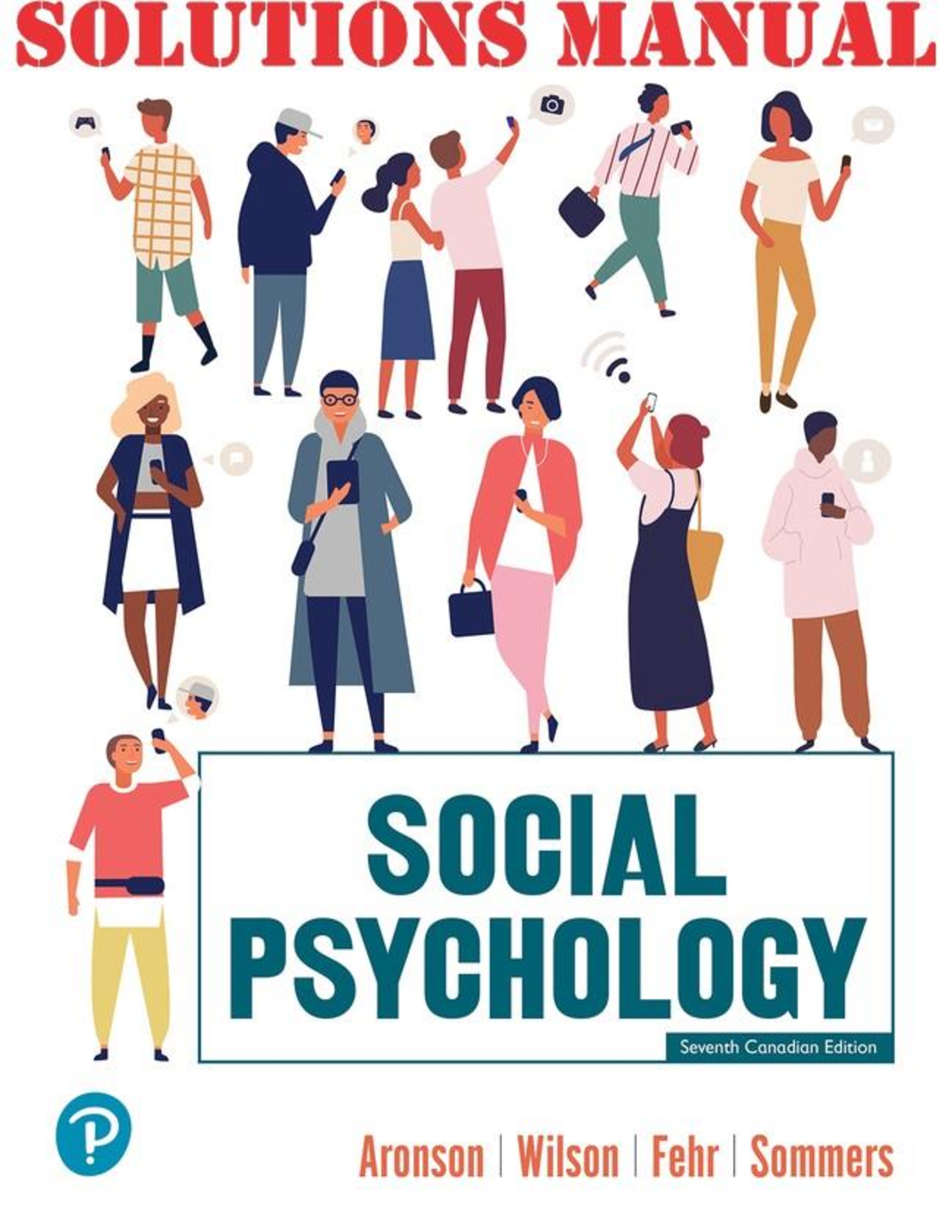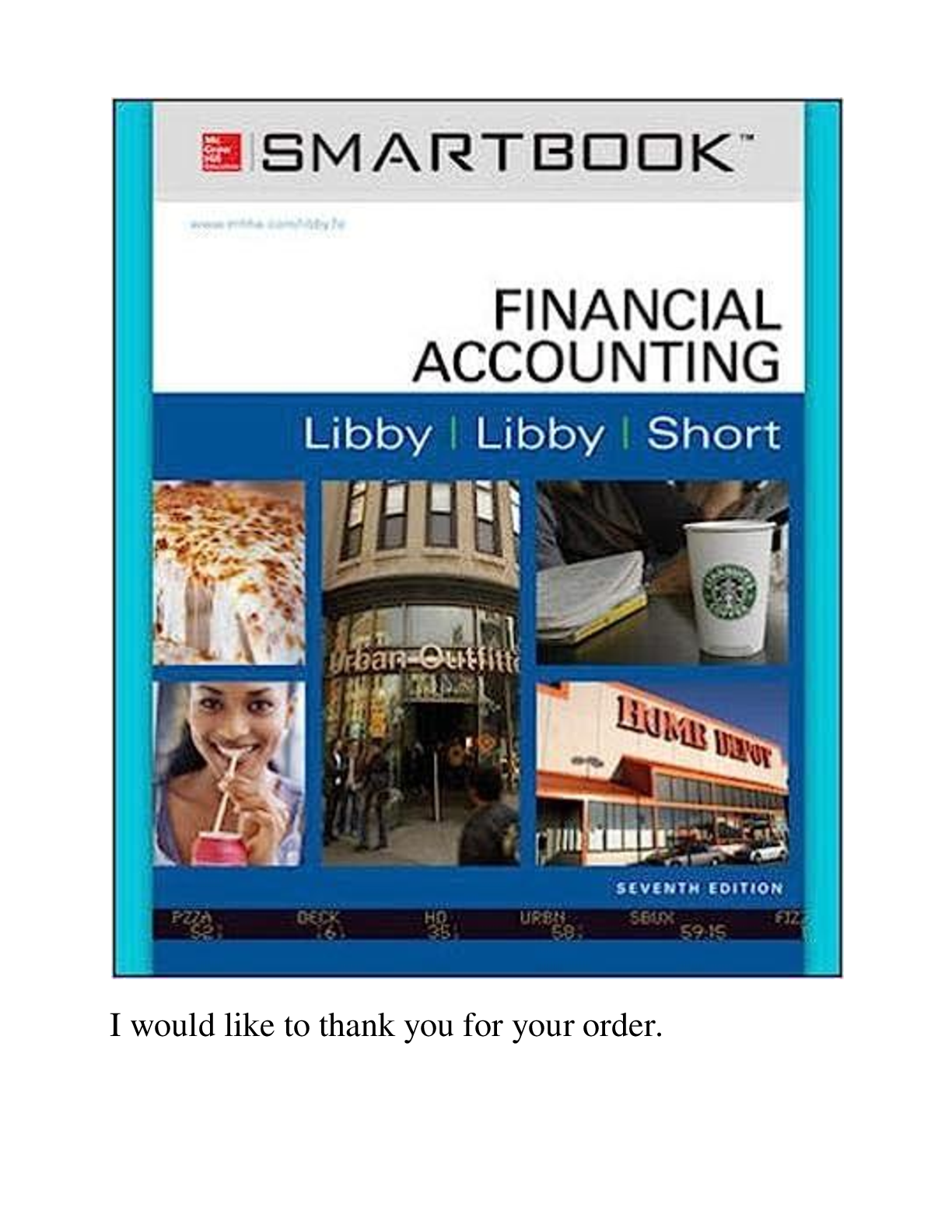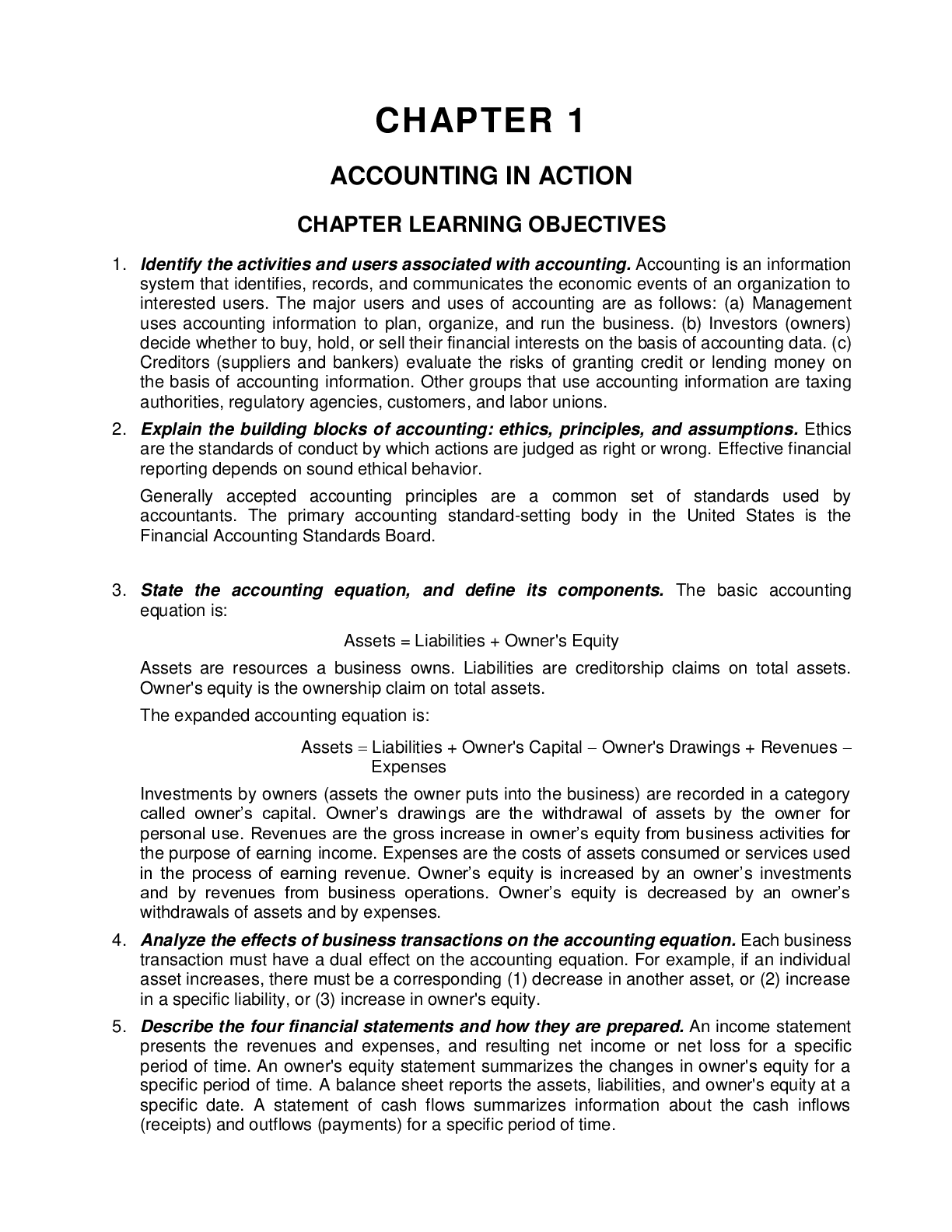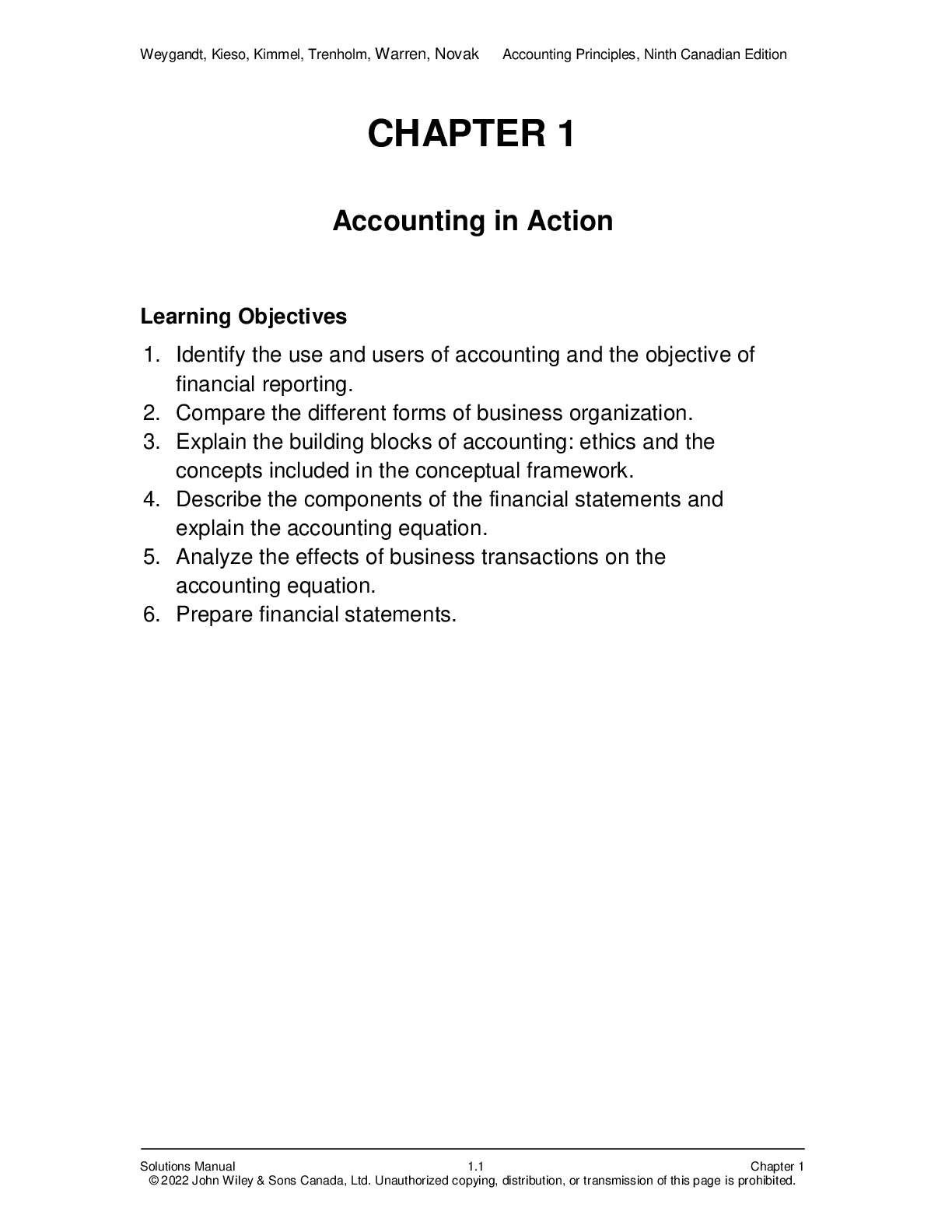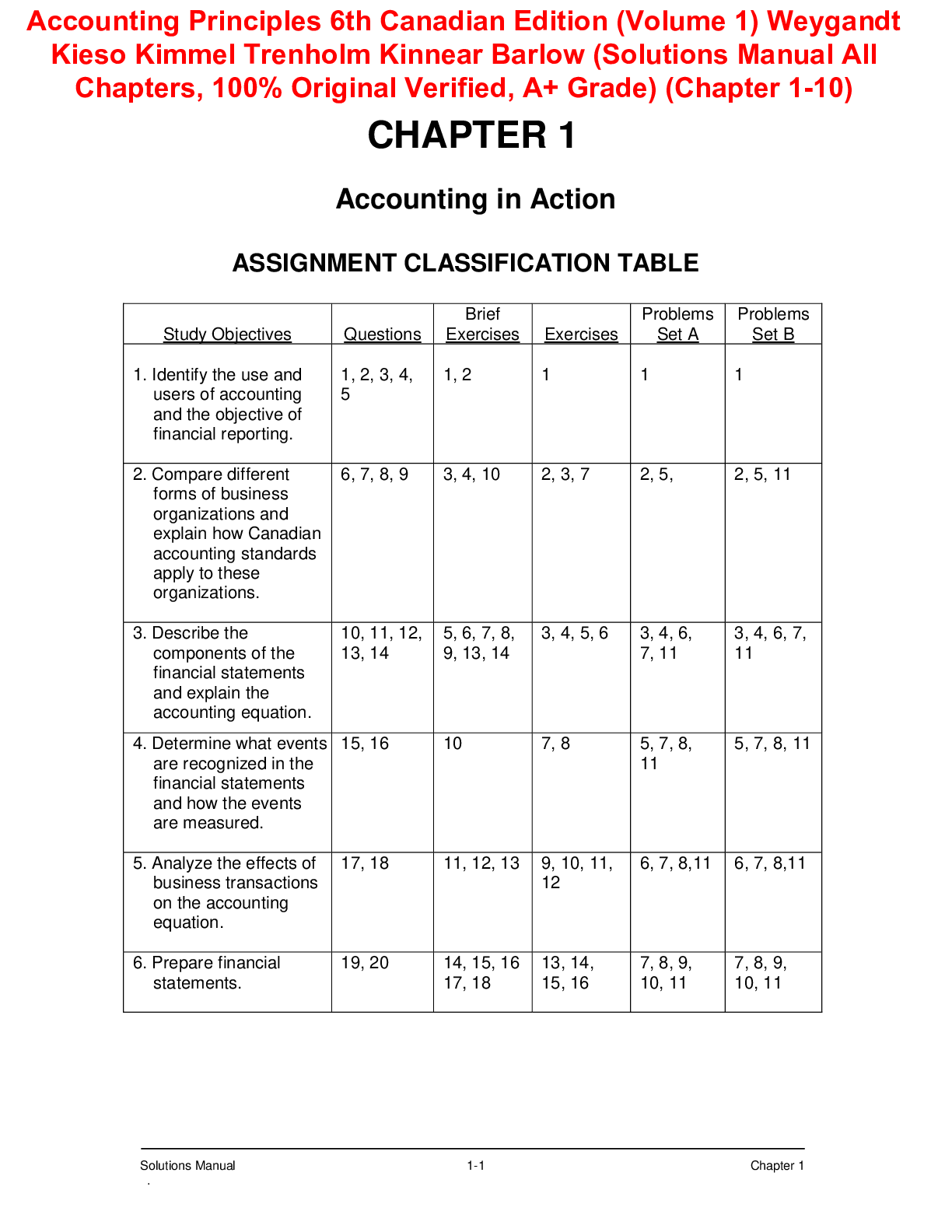Accounting > SOLUTIONS MANUAL > Solution Manual For Accounting Principles 7th Canadian Edition, (Volume 1) 7e Weygandt Donald Kieso (All)
Solution Manual For Accounting Principles 7th Canadian Edition, (Volume 1) 7e Weygandt Donald Kieso Kimmel Trenholm Warren Novak
Document Content and Description Below
Solution Manual For Accounting Principles 7th Canadian Edition, (Volume 1) 7e Weygandt Donald Kieso Kimmel Trenholm Warren Novak-1. Identify the use and users of accounting and the objective of financ... ial reporting. Accounting is the information system that identifies, records, and communicates the economic events of an organization to a wide variety of interested users. Good accounting is important to people both inside and outside the organization. Internal users, such as management, use accounting information to plan, control, and evaluate business operations. External users include investors and creditors, among others. Accounting data are used by investors (owners or potential owners) to decide whether to buy, hold, or sell their financial interests. Creditors (suppliers and bankers) evaluate the risks of granting credit or lending money based on the accounting information. The objective of financial reporting is to provide useful information to investors and creditors to make these decisions. Users need information about the business’s ability to earn a profit and generate cash. For our economic system to function smoothly, reliable and ethical accounting and financial reporting are critical. 2. Compare the different forms of business organization. The most common examples of business organization are proprietorships, partnerships, and corporations. Proprietorships and partnerships are not separate legal entities but are separate entities for accounting purposes; income taxes are paid by the owners and owners have unlimited liability. Corporations are separate legal entities as well as separate entities for accounting purposes; income taxes are paid by the corporation and owners of the corporation have limited liability. 3. Explain the building blocks of accounting: ethics and the concepts included in the conceptual framework. Generally accepted accounting principles are a common set of guidelines that are used to prepare and report accounting information. The conceptual framework outlines some of the body of theory used by accountants to fulfill their goal of providing useful accounting information to users. Ethical behaviour is fundamental to fulfilling the objective of financial accounting. The reporting entity concept requires the business activities of each reporting entity to be kept separate from the activities of its owner and other economic entities. The going concern assumption presumes that a business will continue operations for enough time to use its assets for their intended purpose and to fulfill its commitments. The periodicity concept requires businesses to divide up economic activities into distinct periods of time. Qualitative characteristics include fundamental and enhancing characteristics that help to ensure accounting information is useful. Only events that cause changes in assets, liabilities, or owner’s equity are recorded. Recognition is the process of recording items and measurement is the process of determining cost concept states that assets should be recorded at their historical (original) cost. Fair value may be a more appropriate measure for certain types of assets. Generally fair value is the amount the asset could be sold for in the market. The monetary unit concept requires that only transactions that can be expressed as an amount of money be included in the accounting records, and it assumes that the monetary unit is stable. The revenue recognition principle requires companies to recognize revenue when a performance obligation(s) is satisfied. The matching concept requires that costs be recognized as expenses in the same period as revenue is recognized when there is a direct association between the cost incurred and revenue recognized. 1 - 2 Exercises for Accounting Principles, Seventh Canadian Edition In Canada, there are two sets of standards for profit-oriented businesses. Publicly accountable enterprises must follow International Financial Reporting Standards (IFRS) and private enterprises have the choice of following IFRS or Accounting Standards for Private Enterprises (ASPE). 4. Describe the components of the financial statements and explain the accounting equation. Assets, liabilities, and owner’s equity are reported in the balance sheet. Assets are present economic resources controlled by the business as a result of past events that are capable of producing economic benefits. Liabilities are present obligations of a business to transfer an economic resource as a result of past events. Owner’s equity is the owner’s claim on the company’s assets and is equal to total assets minus total liabilities. The balance sheet is based on the accounting equation: Assets = Liabilities + Owner’s equity. The Income statement reports the profit or loss for a specified period of time. Profit is equal to revenues minus expenses. Revenues are the increases in assets, or decreases in liabilities, that result from business activities that are undertaken to earn profit. Expenses are the cost of assets consumed or services used in a company’s business activities. They are decreases in assets or increases in liabilities, excluding withdrawals made by the owners, and result in a decrease to owner’s equity. The Statement of owner’s equity summarizes the changes in owner’s equity during the period. Owner’s equity is increased by investments by the owner and profits. It is decreased by drawings and losses. Investments are contributions of cash or other assets by owners. Drawings are withdrawals of cash or other assets from the business for the owner’s personal use. Owner’s equity in a partnership is referred to as partners’ equity and in a corporation as shareholders’ equity. A Cash flow statement summarizes information about the cash inflows (receipts) and outflows (payments) for a specific period of time. 5. Analyze the effects of business transactions on the accounting equation. Each business transaction must have a dual effect on the accounting equation. For example, if an individual asset is increased, there must be a corresponding (1) decrease in another asset, (2) increase in a liability, and/or (3) increase in owner’s equity. 6. Prepare financial statements. The Income statement is prepared first. Expenses are deducted from revenues to calculate the profit or loss for a specific period of time. Then the Statement of owner’s equity is prepared using the profit or loss reported in the Income statement. The profit is added to (losses are deducted from) the owner’s equity at the beginning of the period. Drawings are then deducted to calculate owner’s equity at the end of the period. A balance sheet reports the assets, liabilities, and owner’s equity of a business as at the end of the accounting period. The owner’s equity at the end of period, as calculated in the Statement of owner’s equity, is reported in the balance sheet in the owner’s equity section. Accounting in Action 1 - 3 EXERCISES Exercise 1 Ogilvie Homes is a business owned by Joe Ogilvie. The accounting for this business is done by Joe’s sister Leigh. Leigh is currently preparing the 2017 year-end financial statements which Joe will use for three purposes: 1. to submit with his tax returns; 2. to support a loan application; and 3. to help him evaluate the success of the business. Instructions a) For each of the three purposes identified, describe the information needs the user will fulfill based on Ogilvie Home’s financial statements. b) Leigh has suggested that she can help Joe out by recording some January 2018 revenue in December 2017. She feels this is reasonable because it is just a slight timing difference and so “not really dishonest”. Comment on the ethical implications of this suggestion and explain how each of the three users’ needs may be affected if Leigh implements her suggestion. Solution Exercise 1 (10 min.) a) Information needs for each of the three users: 1. The tax department will want to know whether the company respects tax laws. 2. The bank’s loans officer will evaluate the risk of granting credit or lending money. 3. Joe will be able to assess whether the business is earning him the amount of profit he is expecting in comparison with other similar businesses. b) Leigh’s action would be unethical because it would be misrepresenting the true results of the business operations for 2017. It would violate the trust each financial statement user places in the accounting information. The effect on each of the needs identified in part a) would be: 1. The tax department might assess higher taxes than are really warranted. 2. The bank might lend more money to Joe than they would otherwise, based on expectations of higher future profits than can actually be achieved because the bank’s projections are based on incorrect historical information. 3. Joe might assume that past projects were more profitable than they really were. He might therefore reject new projects based on the assumption that he does not need to increase his sales above current levels in order to earn target profit levels [Show More]
Last updated: 9 months ago
Preview 5 out of 964 pages

Loading document previews ...
Buy this document to get the full access instantly
Instant Download Access after purchase
Buy NowInstant download
We Accept:

Reviews( 0 )
$18.50
Can't find what you want? Try our AI powered Search
Document information
Connected school, study & course
About the document
Uploaded On
Oct 16, 2024
Number of pages
964
Written in
Additional information
This document has been written for:
Uploaded
Oct 16, 2024
Downloads
0
Views
36

